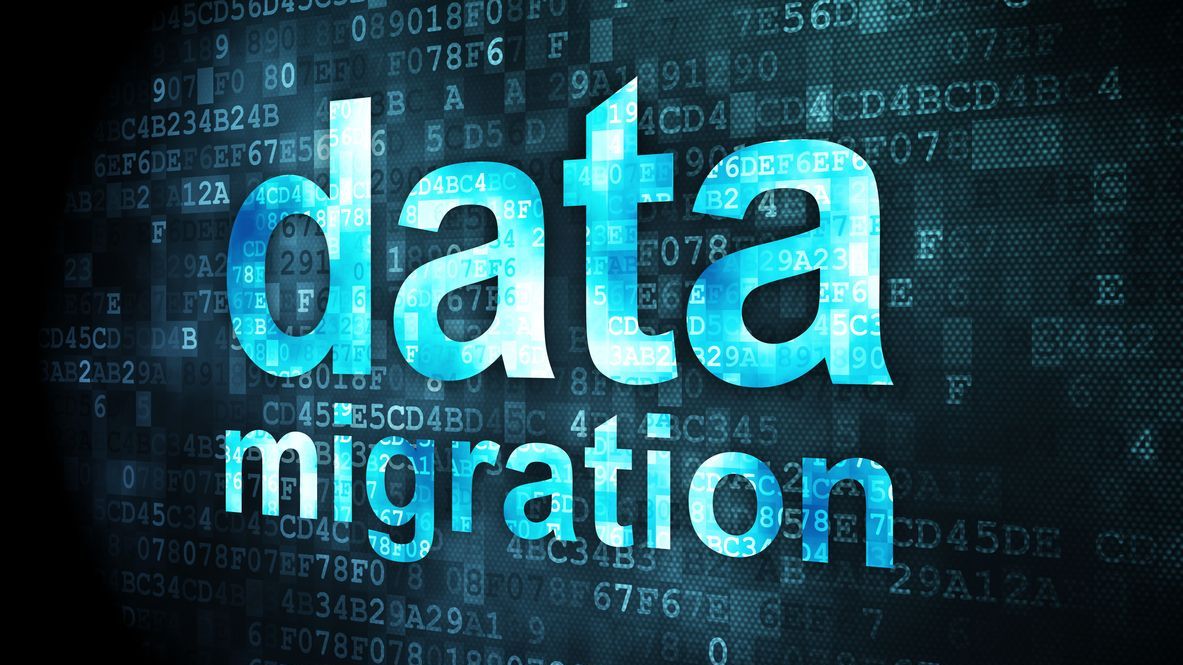Employee scheduling software has quickly become a cornerstone for modern businesses looking to streamline how they organize shifts, track employee availability, and optimize overall staffing. Whether you’re running a small retail business, a healthcare facility, or a bustling hospitality operation, an effective scheduling platform can dramatically reduce administrative overhead, improve staff satisfaction, and keep operations running smoothly. But successfully implementing new software doesn’t just mean downloading an app or web tool—it requires a thorough onboarding plan that includes everything from initial training sessions to data migration of existing schedules and employee information.
In this comprehensive guide, we’ll walk you through the essentials of choosing an employee scheduling solution, managing the onboarding process, and executing data migration correctly. We’ll address common questions about importing employee data and transferring existing schedules, and we’ll highlight the best practices to keep your entire organization aligned. Plus, we’ll explore how solutions like Shyft’s employee scheduling software can help you tailor the implementation process to fit the unique needs of your company. Let’s dive right in.
1. Identifying the Right Employee Scheduling Software
Before you can begin the process of implementation and onboarding, you need to select the right employee scheduling software. With countless options on the market, it’s crucial to narrow your choices based on your organization’s needs, such as the number of employees, the complexity of shift arrangements, and specific industry compliance requirements.
- Scalability: Make sure the platform can accommodate future growth, additional locations, or expansions to new departments.
- Integration Capabilities: Check if the scheduling tool integrates easily with existing systems, such as payroll or HRIS software.
- Industry-Specific Features: For healthcare, for example, you may need specialized features like compliance alerts and 24-hour shift schedule support.
- User-Friendliness: The interface should be straightforward for employees and managers, ensuring minimal training hurdles.
Beyond these technical features, evaluate the software provider’s customer support and overall reputation. Reviews and case studies, like the Shyft case study for warehouses and distribution centers, can offer insights into real-world performance. Remember that if you plan to add functionalities, such as a communication platform or advanced time-off management, you should confirm these features are accessible through your chosen software. The right choice will set the stage for successful onboarding and seamless data migration.
2. Planning the Implementation Strategy
Once you’ve identified a suitable scheduling solution, the next critical step is planning how you will implement it within your organization. A clear, well-organized strategy not only reduces operational disruptions but also fosters better acceptance among your teams.
- Set Clear Goals: Define what you aim to achieve—reduced scheduling errors, improved employee satisfaction, or easier coverage of last-minute absences.
- Assemble a Project Team: Put together a group that includes managers, HR personnel, and tech-savvy staff to oversee the implementation.
- Create a Timeline: Outline each phase of the rollout, from initial setup to final adoption. Build in buffer time for troubleshooting and adjustments.
- Allocate Resources: Ensure you have the budget, personnel, and technological support to complete the rollout smoothly.
An effective implementation plan often includes pilot testing in one department before rolling it out organization-wide. This pilot phase helps you identify unexpected issues—from integration glitches to communication gaps—without overwhelming the entire workforce. Additionally, gather feedback during each implementation stage; employees at different levels may offer valuable perspectives on day-to-day usage. Then, refine your strategy or training materials as needed. A well-planned rollout can greatly streamline everything that follows, including the pivotal onboarding and data migration processes.
3. Onboarding Basics: Setting Up for Success
The onboarding phase is where employees become acquainted with the new scheduling system. Effective onboarding not only focuses on technical training but also helps staff understand how the tool can improve their day-to-day responsibilities. From managers to hourly workers, everyone should feel comfortable navigating core features: checking schedules, requesting time off, or swapping shifts when needed.
- Interactive Training Sessions: Live demos and hands-on tutorials encourage employees to explore the interface and ask questions.
- Documentation and Guides: Provide step-by-step materials, such as an employee schedule app guide, that employees can reference as needed.
- Manager Coaching: Supervisors should receive extra training on advanced features like analytics, reporting, and shift optimization.
- Regular Check-Ins: Schedule follow-up meetings or virtual Q&A sessions to monitor how well employees are adapting and to clarify any concerns.
When guiding your workforce through this phase, emphasize the benefits: fewer scheduling conflicts, quicker approvals for shift swaps, and better visibility into staffing needs. By involving employees early on and providing tangible resources, you build a sense of shared ownership that can boost your long-term adoption rates. Of course, the onboarding phase runs parallel to a critical technical component: data migration. Ensuring that all employee information is accurate and up-to-date in the new system is a vital step toward seamless scheduling processes.
4. Understanding Data Migration Fundamentals
Data migration is the process of transferring all your relevant information—such as employee details, historical schedules, and attendance records—into your new scheduling software. This critical stage can often be the most time-consuming and complex aspect of your rollout plan. However, a well-managed migration sets the foundation for accurate, efficient scheduling going forward.
- Assess Current Data: Determine which data needs transferring, including employee contact info, roles, and any specific time-off records.
- Cleanse and Verify: Remove duplicates or outdated entries before import. Ensuring data accuracy at this stage prevents future scheduling mistakes.
- Map Data Fields: Align each field from your old system (e.g., shift codes, departments) to the corresponding fields in the new software.
- Test with Sample Data: Start with a small subset of employees to confirm that everything loads correctly and that historical schedules remain intact.
If done properly, this process ensures that employees maintain their same roles and privileges in the new system and that all historical schedules remain readily accessible. Consult your software vendor’s support documentation or speak with them directly to confirm the best approach. Many providers, including Shyft, offer specific data import guides that break down each step in detail. By taking the time to plan this critical piece, you’ll significantly reduce technical hiccups and the risk of staff frustration once the system goes live.
5. Detailed Steps for Smooth Data Migration
Migrating data to new scheduling software can feel overwhelming, especially if you have years of historical schedules. By breaking the process into logical steps, you can systematically handle tasks and ensure minimal disruptions. Below is a suggested workflow for data migration—customize it based on your company’s size, data complexity, and internal policies.
- Inventory Your Data: Identify all databases, spreadsheets, and paper records that need to be digitized.
- Consolidate Information: Gather all records into one central system or file format before importing to minimize errors.
- Use an Import Template: Many scheduling tools provide CSV templates. Copy your data into these templates to match the new system’s format.
- Implement Incremental Importing: Transfer data in batches (e.g., by department) and verify each batch before proceeding to the next.
- Run Parallel Systems Temporarily: For a short period, keep your old scheduling system active as a backup until you confirm that all data in the new system is correct.
Another best practice is to schedule data imports during off-peak hours or weekends. This way, any performance slowdowns won’t disrupt day-to-day operations. Use the time to update any user credentials or roles that may have changed. By approaching data migration in a structured way, you’ll reduce confusion for both managers and staff. Whenever you encounter snags, consult official support guides, like a dedicated data-driven HR resource, to resolve issues quickly. The goal is to achieve a seamless transition where employees can immediately see accurate schedules and historical shift data in one place.
6. Common Data Migration Challenges and Solutions
Data migration isn’t always straightforward. Even with meticulous planning, unforeseen problems can arise—ranging from technical bottlenecks to human error. Identifying and preparing for these potential pitfalls can significantly reduce downtime and keep the project on track.
- Inconsistent Formats: Old data might be stored in multiple file types. Consolidate or convert them into a single, recognized format before importing.
- Data Duplication: Employees who have multiple roles or old user profiles can cause confusion. Regularly reconcile duplicates to maintain accurate records.
- Access Permissions: Ensure you have appropriate permissions for each user in the new system. This step is especially important if department structures have changed.
- Underestimation of Time: Migrating large data sets can take days or even weeks. Factor in extra time for testing and verifying your imported data.
Whenever a challenge emerges, focus on clear communication across teams. For instance, if your final shift schedule is delayed due to a data transfer glitch, notify employees promptly about the revised timeline. It’s also wise to maintain a temporary overlap between the old and new systems until you confirm all data has been imported correctly. This overlap allows for a quick rollback if critical information is missing. By anticipating issues and creating backup plans, you lay the groundwork for a truly smooth migration.
7. Post-Implementation Audits and Employee Feedback
Once your new employee scheduling software is in place, and you’ve successfully migrated data, the journey isn’t over. Post-implementation audits help confirm that the system is running as expected, data integrity is maintained, and employees remain satisfied with the tool. These audits should include both technical evaluations—like checking the accuracy of imported schedules—and user-focused assessments.
- Usage Reports: Look at system analytics to see if employees are logging in regularly and using the available features.
- Error Logs: Check for recurring errors, such as failed shift updates or incorrect time-off balances, to catch problems early.
- Employee Surveys: Gather direct feedback on whether the new platform has made scheduling easier or more complicated.
- Manager Reviews: Have department heads report on workflow improvements or any continuing bottlenecks in the scheduling process.
Based on these findings, you can refine your settings, update training materials, or even reassign specific administrative roles. This ongoing improvement process helps you get the most out of your investment. It’s also helpful to hold a final team meeting or distribute a system satisfaction poll a few weeks after the full transition. This open dialogue not only helps catch hidden issues but also reinforces employees’ sense of investment in how schedules are created and managed. If you decide you want to add more advanced features—like advanced employee induction capabilities or predictive scheduling—this feedback is essential in choosing the next steps wisely.
8. Integrating Onboarding Insights into Future Schedules
Successful implementation doesn’t stop at “going live.” An often-overlooked benefit of robust onboarding and data migration is the wealth of new insights you’ll gain about employee availability, preferred shift patterns, and historical attendance data. These insights can be leveraged to build better schedules and improve team morale.
- Use Historical Trends: Evaluate the data you’ve imported—like peak absenteeism periods or high-volume work hours—and plan your staffing more efficiently.
- Encourage Self-Scheduling: Some systems allow employees to pick open slots. This can reduce scheduling conflicts and increase job satisfaction.
- Establish Onboarding Protocols: Make sure new hires follow a streamlined setup process so their data is accurate from Day One.
- Expand Communication Tools: Features like built-in team communication channels or messaging systems can further simplify coordination.
By consistently integrating the lessons learned during onboarding and data migration into your scheduling approach, you create a feedback loop of continuous improvement. This approach often leads to happier employees who appreciate having a say in their work hours and managers who can trust the data is accurate and up-to-date. Ultimately, these optimizations translate into lower turnover and higher productivity—both hallmarks of a well-implemented scheduling solution.
9. Sustaining Success and Future Considerations
Implementing employee scheduling software, onboarding your workforce, and migrating data are significant milestones in modernizing your operations. Yet, sustaining that initial success requires ongoing attention and adaptation. Continual software updates, changes in workforce size, and evolving business goals can all prompt new scheduling requirements. Regularly revisit your processes to ensure you’re fully leveraging your chosen platform’s capabilities.
If your business model shifts—for instance, opening additional locations or adopting new shift rotations—take time to revisit how you import employees and handle data mapping. Consider advanced scheduling features, such as AI-assisted shift forecasting, or expansions into employee self-service portals. Many solutions like Shyft are designed to be modular, so you can add new functionalities without a complete system overhaul. When handled thoughtfully, the software becomes more than just a scheduling tool—it evolves into a strategic asset that supports better decision-making across your entire organization.
Conclusion
Choosing and implementing employee scheduling software is far more than a simple “plug and play” process. From carefully vetting various platforms to developing a structured onboarding plan and orchestrating a thorough data migration, each step requires thoughtful planning and execution. By taking the time to train staff, verify data accuracy, and integrate historical schedules, you create a robust foundation that supports smoother workflows and greater employee satisfaction.
The rewards can be substantial, including lower scheduling errors, enhanced team communication, and a deeper understanding of your workforce. Whether you lead a small retail operation or manage a complex healthcare facility, investing in proper onboarding and data migration can deliver both immediate improvements and long-term operational benefits. Ultimately, when paired with ongoing audits and an openness to continuous enhancements, your new scheduling solution can become an indispensable tool for guiding your business forward.
FAQ
1. How do I handle data migration for employee scheduling software?
Start by inventorying your existing data—spreadsheets, paper records, or old databases—and then decide which information is still relevant. Clean up inaccuracies or duplicates, use any import templates provided by your new platform, and run smaller test imports before migrating all data. This step-by-step approach reduces errors and speeds up the overall transition.
2. What if my organization has limited tech-savvy staff?
Focus on user-friendly scheduling tools and invest in training sessions. Provide written guides, video tutorials, and even one-on-one coaching if necessary. Choose software that emphasizes an intuitive interface. Many platforms, including Shyft, offer built-in support resources and live assistance to help teams at every skill level.
3. Why is a pilot test important before a full rollout?
A pilot test lets you identify and fix any technical or training issues in a controlled environment. Rolling out the software to a smaller team helps uncover data migration errors, feature mismatches, or onboarding confusion. You can then make necessary adjustments without affecting the entire workforce.
4. What’s the best way to ensure my schedules remain accurate over time?
Accuracy begins with clean data migration, but it continues through routine checks. Perform regular audits of employee information, shift assignments, and time-off balances. Encourage employees to report discrepancies, and update the system promptly. Consistent maintenance keeps your schedules aligned with actual staffing needs.
5. How do I measure success after implementing the new system?
Track key metrics such as the rate of scheduling conflicts, employee satisfaction scores, and how often managers need to manually adjust shifts. Survey employees and managers to collect qualitative feedback on ease of use and overall productivity gains. This combination of data analytics and user feedback helps you gauge the software’s effectiveness and plan for future enhancements.












